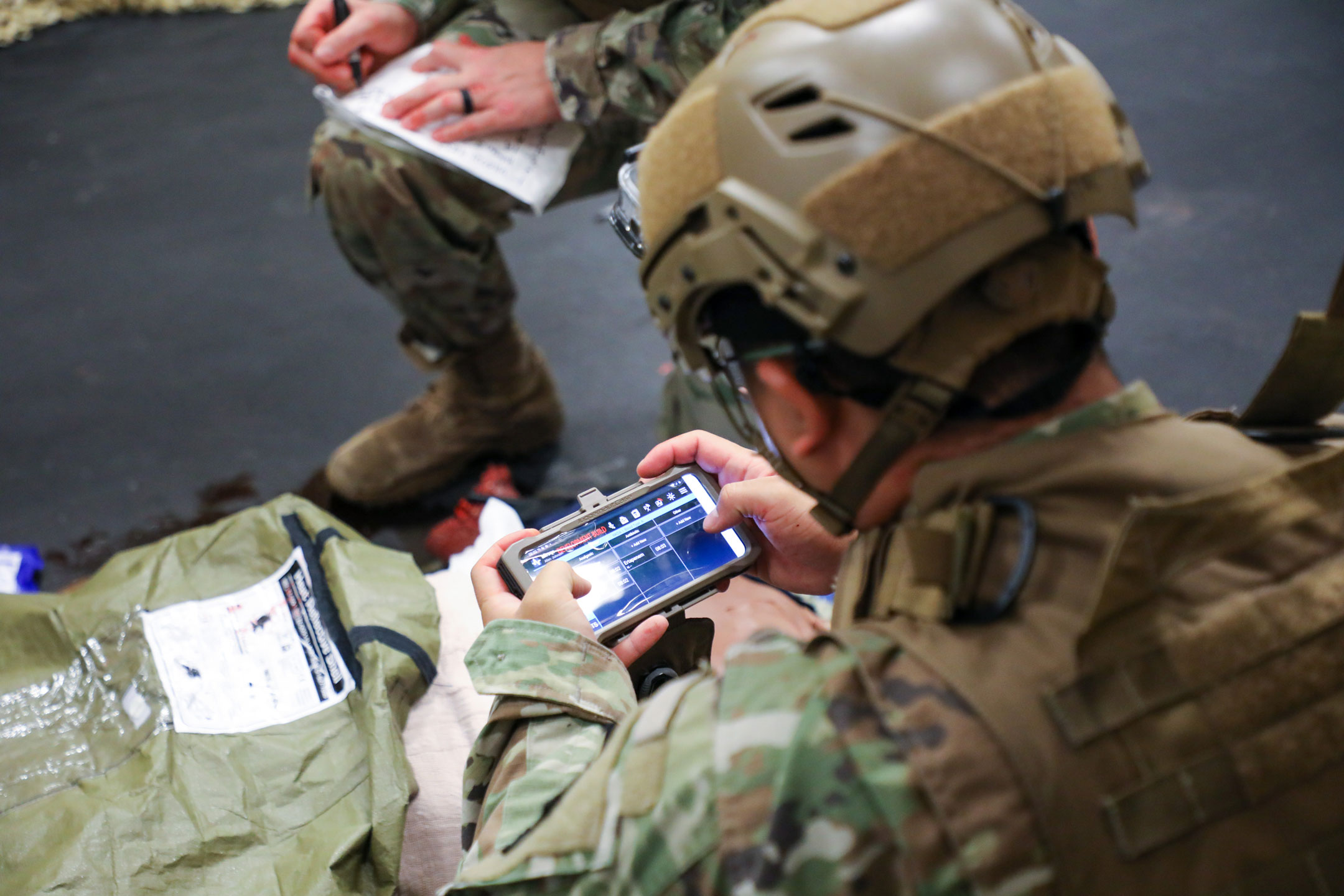MTEC Sponsored Prize Competition for Passive Data Collection for TATRC’s AutoDoc Initiative
Tuesday, April 30, 2024 | Download PDF
Last Fall, TATRC commenced a new Autonomous Casualty Care (AC2) research portfolio with an initial objective of creating an innovative, trustworthy, reliable solution to passively collect data for autonomous care, also known as AutoDoc. Determined to aid, and not distract the combat medic in high-stakes environments, TATRC intends to create a combined sensor suite capable of collecting DD Form 1380 data fields to replace the historical methods of manually collecting tactical combat casualty care (TCCC) data.
 TATRC intends to create a combined sensor suite capable of collecting DD Form 1380 data fields to replace the historical methods of manually collecting tactical combat casualty care (TCCC) data.
TATRC intends to create a combined sensor suite capable of collecting DD Form 1380 data fields to replace the historical methods of manually collecting tactical combat casualty care (TCCC) data.
To jump start this effort prior to receiving formal funding, TATRC has collaborated with the Medical Technology Enterprise Consortium (MTEC) in coordination with U.S. Army Medical Research Acquisition Activity (USAMRAA) to conduct a novel prize competition to ascertain combinations of commercial off-the-shelf technologies (COTS) sensors necessary for passive data collection. This government, not-for-profit collaboration was the first of its kind, as the prize funding source came from the consortium, rather than the government.
MTEC’s sensor suite prize competition solicitation included requirements for three discrete assessment phases, all to be evaluated by TATRC.
• Phase 1 was a Solution Brief, where proposals were evaluated based on Programmatic Relevance and Technical Merit; Personnel and Team.
• Phase 2 involved a Virtual Pitch Session, including a summary of each proposed sensor suite solution and Q & A session, which was evaluated against Technical Feasibility; Scalability and Sustainability.
• Phase 3 was a Live Demonstration and Assessment of the prototype sensor suite sets, which was assessed by Face Validity; Simulated Use; and Data Quality.
All the prize competition phase criteria were evaluated by MTEC and TATRC government personnel and were scaled on a 10-point Likert scale, ranging from 0 (lowest score) to 10 (highest score). Eight total submissions were assessed by MTEC and TATRC in Phase 1. Assessment scores for both Phase 1 criteria were totaled, and the top scoring teams (n=2) were recommended to advance to the Phase 2 assessment. These two teams, Applied Research Associates and Ejenta, were assessed and evaluated in a similar manner against the Phase 2 criteria, and as a result, both were recommended to advance to Phase 3, the final stage.
Phase 3 evaluations are currently ongoing, but are scheduled to be completed by spring of 2024 in the TATRC NEXUS simulation lab. Only one prize winner will be selected by MTEC. This phase will include additional evaluation metrics based on their prototypes, including user surveys and an evaluation of the suitability, accuracy, and completeness of the data. The top scoring team within this phase will be nominated as the winners of the prize competition, and ultimately, it will be their combination of sensor suites that will be utilized to continue TATRC’s overall effort of automating TCCC data collection.
The significance of this event is that this collaboration between MTEC and TATRC is the first of its kind. Offering a monetary prize from the not-for-profit consortium to commence the AC2 research portfolio efforts has provided a feasible solution to mitigate the challenges of expediting and advancing government research and development (R&D) by leveraging extramural partnerships in a more timely fashion.
For more information on this competition, please contact Ms. Jeanette Little at jeanette.r.little.civ@health.mil.
This article was published in the April 2024 issue of the TATRC Times.